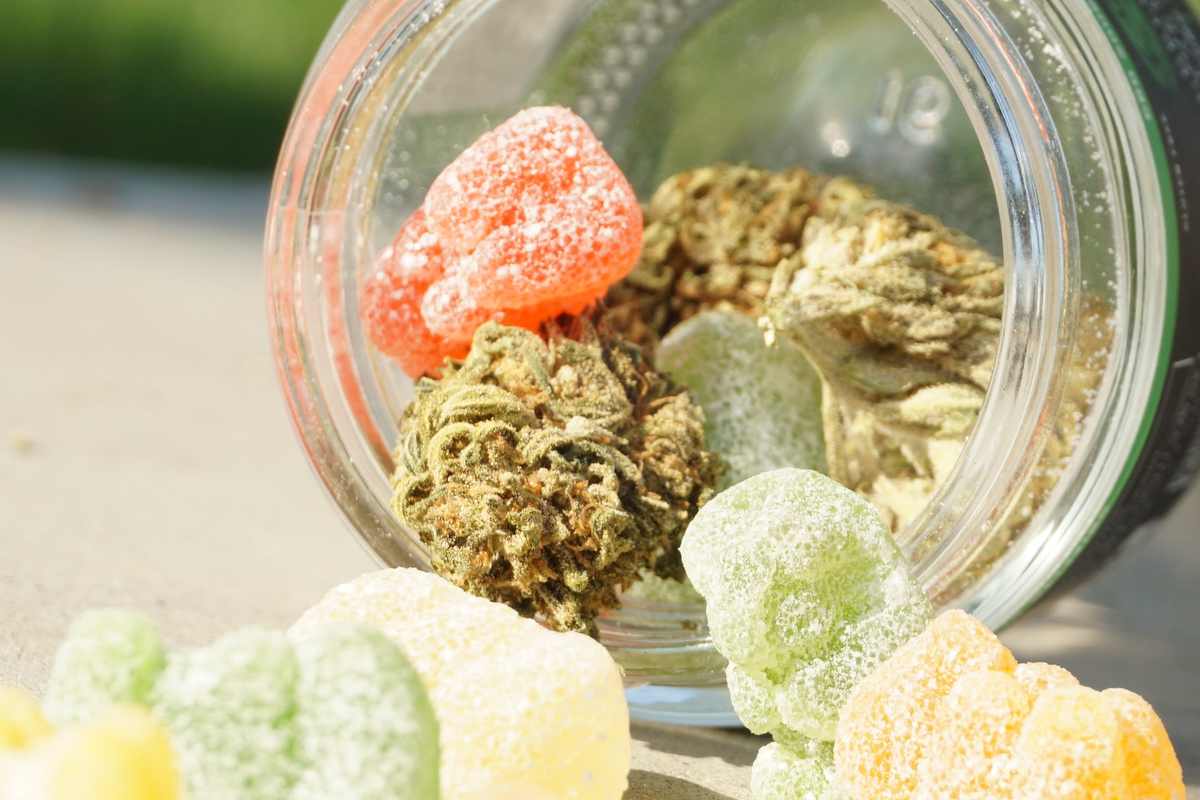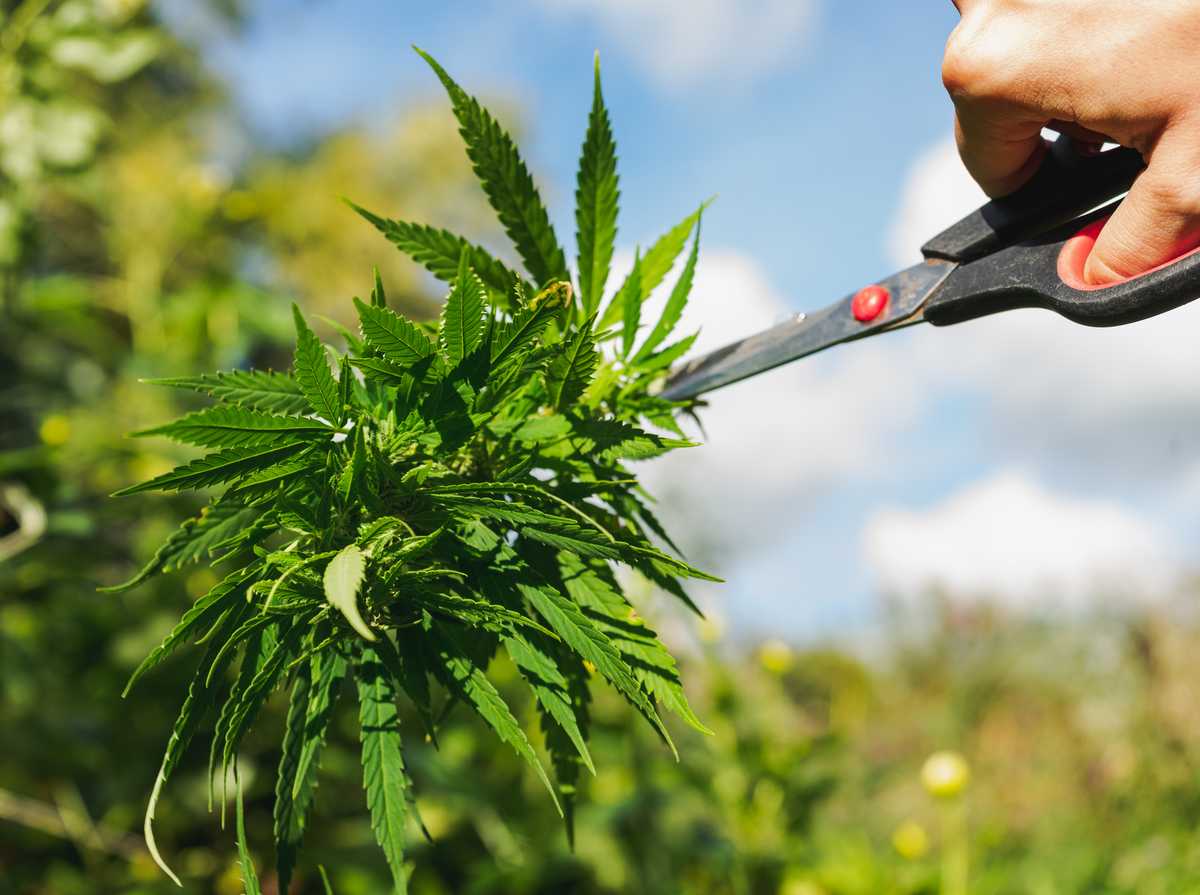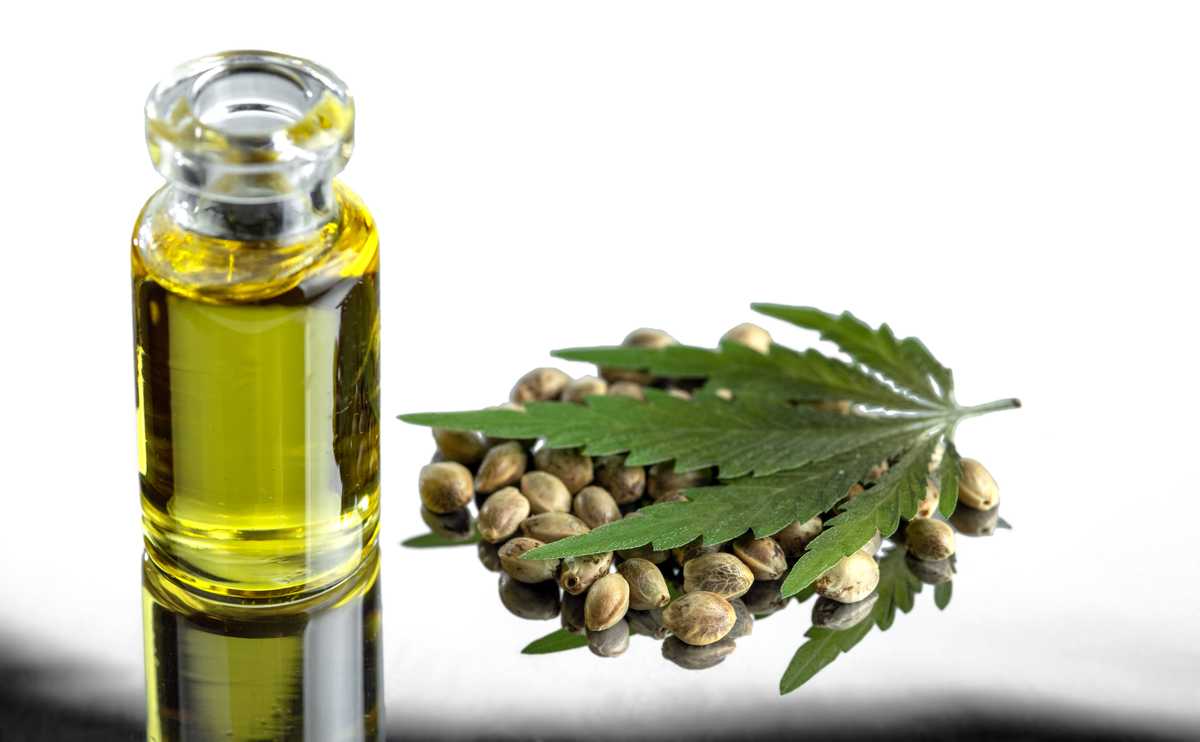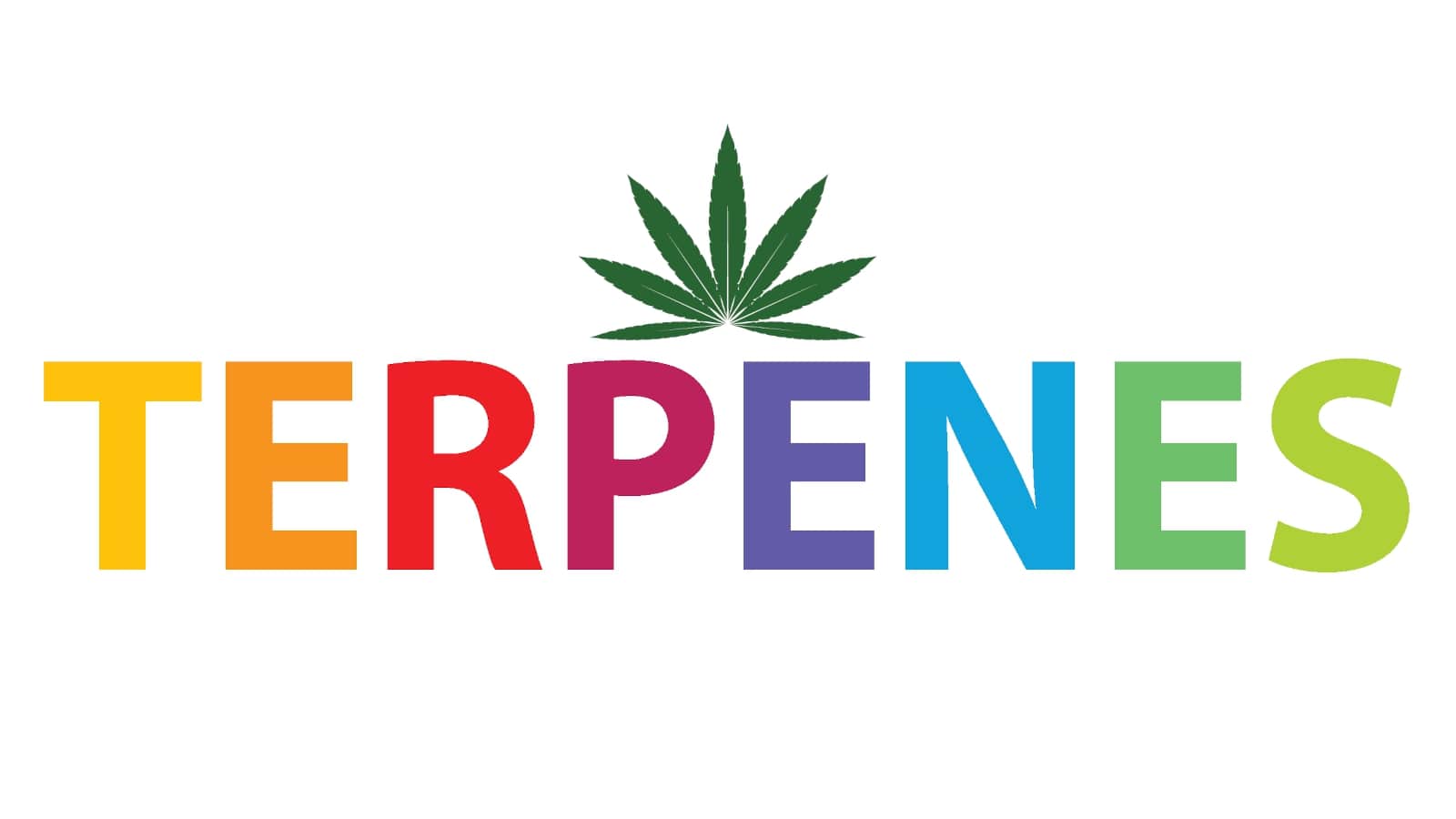
Cannabis Terpenes: What Are They And What Do They Do?
- Terpenes Synergistic Effects
- What are Flavonoids?
- The Terpene Wheel
- The Great List Of Terpenes in Cannabis
A very extensive range of compounds and chemicals are found in the cannabis plant. Out of the total plant varieties, around 140 varieties fall into the Terpenes class - the class that contains scented natural hydrocarbons.
It is pronounced as Tur-Peens. This term - terpenes - often gets confused with the most frequently heard word called terpenoids. Though these words are sound similar and are switched due to resemblance, they have different meanings.
The main differences between both the terms are:
- Terpenes - these are hydrocarbons that contain only carbon and hydrogen.
- Terpenoids - The natural qualities are altered and modified with the help of the oxidation process.
These terpenes lie within the glandular trichomes of the cannabis plant. And, within trichomes in they are further synthesized in the secretory cells.
Their production is intensified with additional light coverage. Unfertilized female cannabis flowers are flooded with the highly potent terpenes before its senescence process, i.e. the condition of aging (or deterioration due to time factor).
To extract the plant contents, Steam Distillation (Vaporization) is used.
The evaporation temperature or the boiling point of most of the terpenes is 1570C, which is identical to the vaporization point of THC. But some of the cannabis terpenes are more unstable and require more delicate extraction methods.
One more critical function of terpenes is providing the natural defence from various types of harmful bacteria, insects, fungus, and different natural pressures, to the cannabis plant.
The most extensively studied part of the cannabis plant has been performed on Delta-9-Tetrahydrocannabinol (THC) - one of the chief psychotropic cannabinoids.
Unfortunately, most of the other parts of the cannabis plant has been ignored up until recent years. The terpenoids, cannabinoids, and flavonoids, that are found in medical marijuana are not studied to that extent, even though they may have excellent therapeutic effects on the patients.
Terpenes are widely used in the food and aromatic industries for flavouring and inducing fragrance, respectively. The main reason is terpenes are 100% responsible for the cannabis aroma. Most of the government agencies, including the American FDA and the Australian TGA departments, have given terpenes as Safe to Use’ recognition.
The positive psychological effects of Terpenes can be listed down as:
- Acts on the neurotransmitters and receptors of the human brain
- Are liable to melt bodily fats or lipids
- Perform the role of up-taking Serotonin (a blood-compound that acts as a neurotransmitter) similar to the effect of Prozac - widely used antidepressants.
- Triggers norepinephrine activities - tricyclic antidepressants similar to Elavil
- Increase Dopamine activities- a body-compound that acts as a neurotransmitter.
- Build-up GABA (gamma-aminobutyric acid)
All the effects listed above are without any structured study. Hence, in-depth research is required to get accurate results with regards to how Terpenes can be utilized to their 100% medicinal benefits and eradicate various health ailments.
Table of Contents.
Let’s get started into what Terpenes mean to Australian cannabis users and the medical community.
Terpenes Synergistic Effects
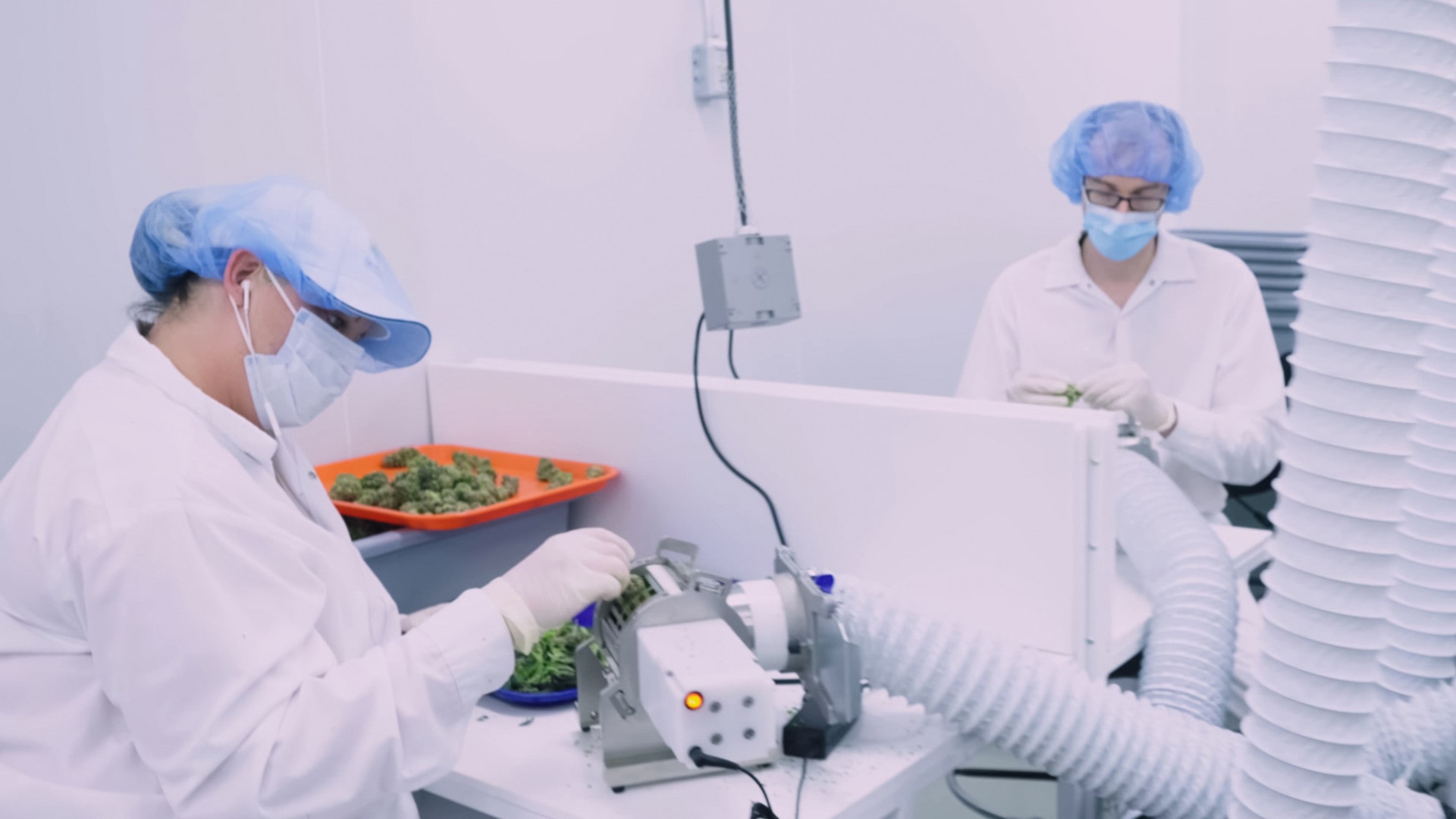
There was a study conducted by Carlini et al. that showed there can be very positive effects from THC and other cannabis constituents’ on the Synaptic plasticity of human beings, which enhances potentiation (the learning capacity of human beings)?
The double-blind study (results not disclosed until the test is authorized and confirmed) was undertaken, wherein, when the cannabis with the same or additional levels CBN and CBD to THC was used, the resulted effects were more than two to four times higher than the THC content used as a single ingredient.
Furthermore, these study results were strengthened after the research undertaken by Wilkinson et al. concerning whether it is advantageous to use cannabis extracts together or as separate concentrated extracts.
This experiment was done using the following extracts:
- Standardized Cannabis Extract of THC.
- CBD
- CBN (SCE)
And comparing them with two elements - pure THC and CBD (THC-free extract) on a mouse model of Multiple Sclerosis (MS); it gave a perfect study of rat Brain Slice Model Of Epilepsy.
Following were the results:
- SCE slowed down the spasticity in the MS model (when compared with the only THC) and gave a faster muscle relaxation with lesser time than using the only THC.
- There was no slowing down in the spasticity by using only CBD.
- In this experiment of the Epilepsy Model, the SCE showed higher potency & furiously acting as anticonvulsant than exclusive THC.
- Even CBD showed anticonvulsant activities and did not inhibit seizures, nor did it modulate the THC activities.
- This proved that some of the cannabis actions did not regulate THC activities. Hence, some of the actions of cannabis like anti-spasticity, which were due to THC as one single constituent was because of the presence of other components.
- All the above results confirmed that not all the therapeutic actions of cannabis herb are due to the THC content.
- All the above results confirmed that THC content - present in the cannabis herb - is not responsible for all the therapeutic actions.
This Epilepsy model gets strong support from Dr. Ethan Russo by providing scientific proofs. As per his studies:
- Non-cannabinoid plant components, like terpenes, act as inhibitors to THC’s mind-altering effect, thus increasing the therapeutic index of THC.
- Russo terms this as “The Phytocannabinoid-terpenoid Synergy”, and it enhances the prospective medicinal effects of the cannabis-based products to treat inflammation, discomfort, contaminations, nervousness, melancholy, habit, epilepsy, including cancer!
What are Flavonoids?
Around 6000+, various types of nutrients have been acknowledged by the scientists, which are termed as Flavonoids. And hence Flavonoids is one of the largest Nutrient Families known to humankind.
Some of the essential compounds that are found in the cannabis plant are - Vitexin, Kaempferol, Isovitexin, β-sitosterol, Apigenin, Cannflavin A and Cannflavin B, Quercetin, Luteolin, and Orentin!
Flavonoids contents act as the superior quality anti-inflammatory and antioxidants. They support the food industry on an enormous scale because of their rich colour content, which is vastly used to create attractive colours for food products.
To quote an example; blue colour is extracted from blueberries, and red colour is extracted from raspberries.
Some of the flavonoids that are extracted from the cannabis plant are also used in the field of pharmacy.
Most of the clinical readings are highly positive. But the importance of these positive effects, in the field of medicine, is not studied to its fullest.
No doubt Cannabis Treatment with regards to the patients, flavonoids play a very promising therapeutic role. But it requires in-depth research, especially in the case of the flavonoids interaction with the cannabinoids, either by working together to increase the effects or to reduce the same.
The Terpene Wheel
Terpenes are considered to be the most basic element on which the entire complicated structure of phytohormones (plant hormones that control all the plant activities), colour, sterols (unsaturated steroid), and cannabinoids is formulated.
The most crucial responsibility terpene undertakes is implementing smell (pleasant or unpleasant) to the cannabis and also in what manner it will affect physiologically when consumed.
Before the actual use and selection, all the patients are advised to smell cannabis. The basic idea is these aromas will help to proactively understand their effects.
Medical marijuana strains (flower’s exclusive variety) differ from two different yields or two different birthplaces - as confirmed by the Casano et al study!
But, when compared with other strains, the terpenes that are highly concentrated in specific strain variety can be very easily identified by their strong odour.
Different smell varieties depict different effects on the patients:
- The aroma of clove or musk provides a very soothing and sedative effect due to the excessive level of Myrcene terpene.
- The aroma of Pine or piney aroma provides psychological attentiveness and enhanced remembering capacity due to the excessive level of Pinene terpene.
- The aroma of Lemon or lemony aromas provide temperament enhancement and boldness due to the extreme level of Limonene terpene.
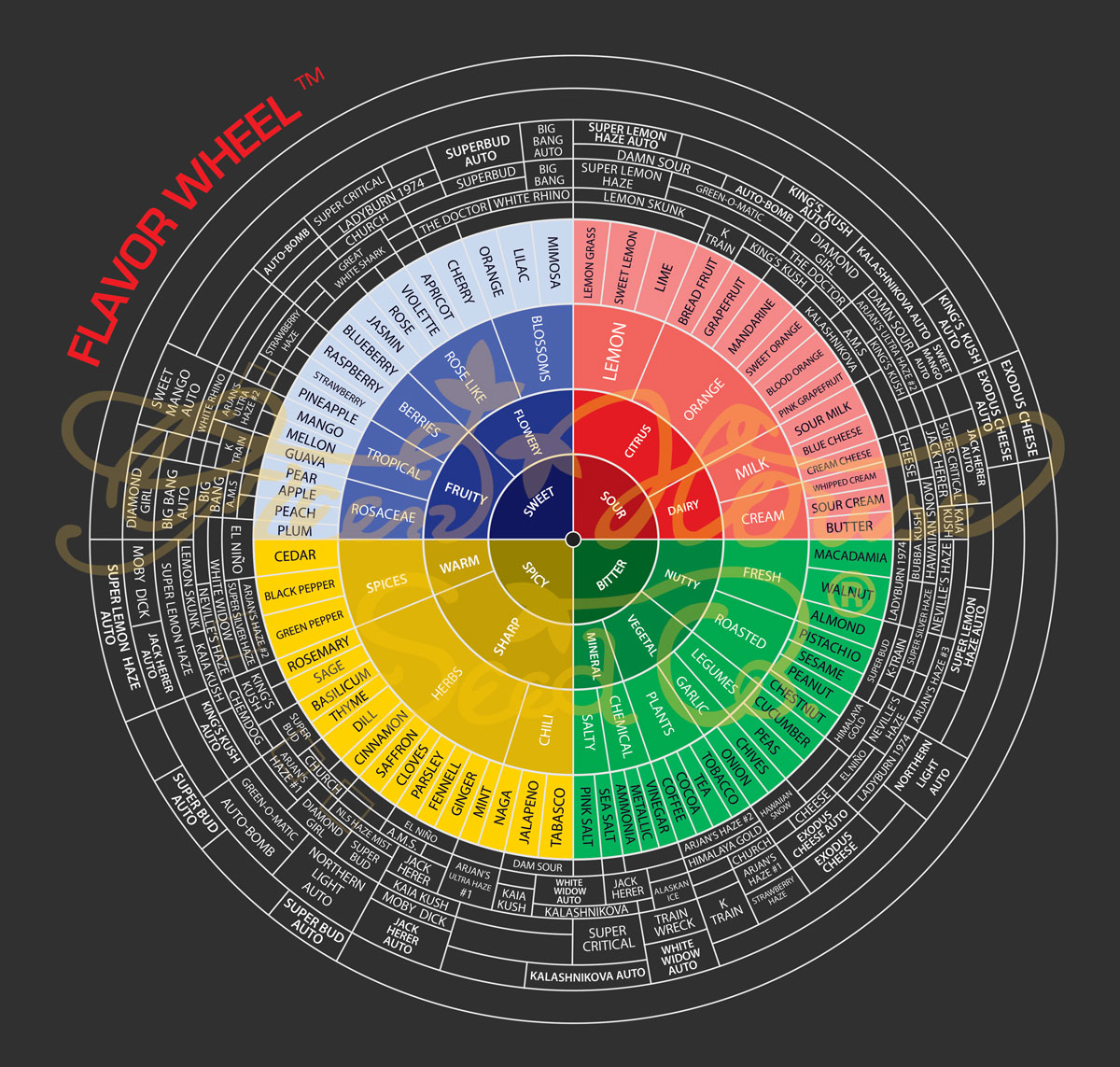
A Flavor Wheel was developed by Green House Seed Company in its spectral analysis study.
In this analysis, the marijuana patients were able to identify the terpenes in each of their strain choice and the expected effects.
The main aim of the flavour wheel though was to promote various types of seeds of this company. But, when all the factors those were required to derive this flavour wheel like - its basic idea, use of various scientific terms, the entire concept - made it a very very valuable instrument for all those involved in the chain of the cannabis plant - Patients, growers, and caregivers.
Now, this has become a trend in most of the companies - to develop their terpene and weed flavour wheels with a similar intention - for marketing their services and products.
With the help of terpene mapping, it is possible to forecast (or influence) all the factors involved like - medical values of different varieties.
This offers limitless opportunities to the breeders for inventing new high-demand cannabis strains with the help of accurate, logical statistics.
When there is a perfect synchronization in the language of all - the breeders, seller, and the patients - it becomes very easy to understand for the patients what medicine they are opting for in advance.
The Great List Of Terpenes in Cannabis
Here we break down all the relevant terpenes and their relationship with cannabis and the human body.
Myrcene Terpenes
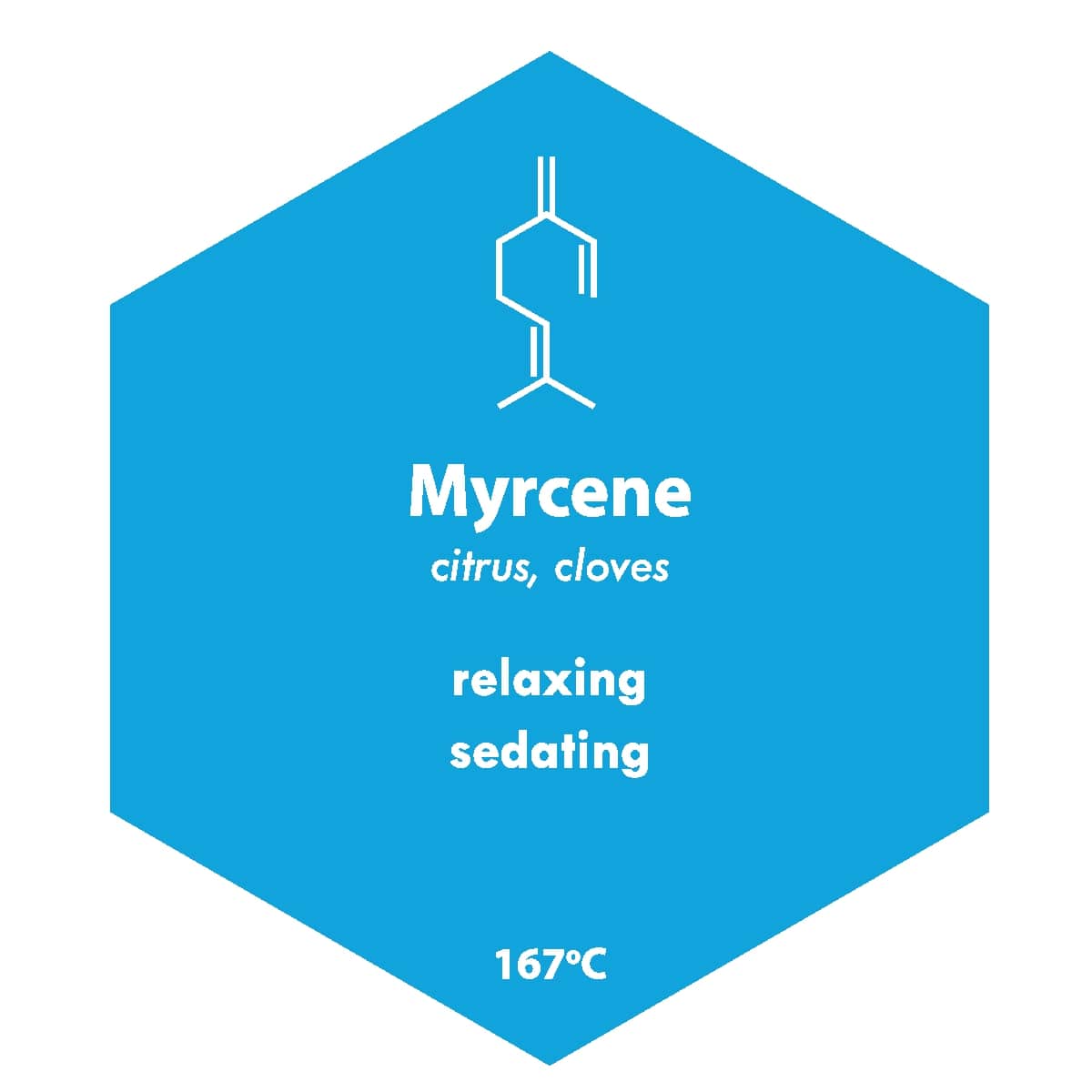
The cannabis Myrcene terpene is dominant in cannabis and is responsible for the plant’s relaxing and sedating effects.
Out of all the terpenes in the plant, Myrcene plays a considerable part in Cannabis’ famous smell. Citrus and musky scent similar to cloves.
The benefits of Myrcene in cannabis is its sedative effect that treats sleep apnea and doubles as a muscle relaxant.
Fun note: Myrcene is also found inside hop plants used to brew beer. When cannabis beer brewers look for cannabis strains, they often choose plants with Myrcene as a dominant terpene.
Pinene Terpenes
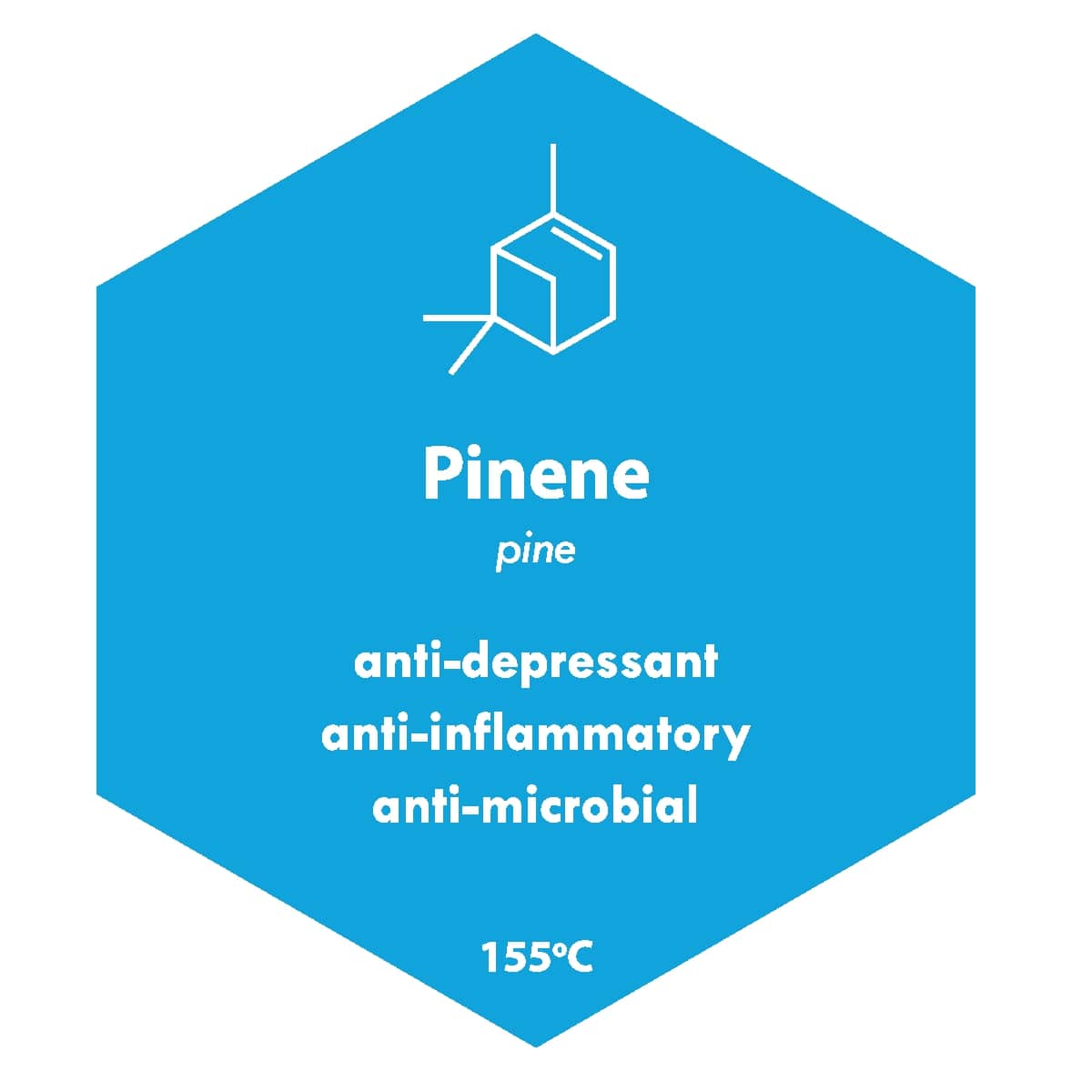
The Pinene terpene stands out among other terpenes with its anti-depressant and anti-inflammatory medical benefits.
There are a large number of terpenes found in the cannabis plant, and Pinene is one of the most researched and well-studied terpenes.
Pinene has a distinct fir and pine tree smell that gives it a mature smell. Its found to have significant anti-inflammatory benefits that are effective at treating respiratory conditions as it opens up our body’s airways.
The main benefits for the Pinene terpene include:
- anti-inflammatory
- anti-depressant
- memory benefits
- treats respiratory conditions
- anti-bacterial
Limonene Terpene

The Limonene terpene standards out with its fruity citrus smell that gives cannabis plants a refreshing aroma. One of the most common terpenes is Limonene, and it has unique anti-anxiety and anti-cancer properties that are popular for medicinal treatments.
Ongoing studies have shown the Limonene terpenes inside from cannabis prevents the further growth of skin tumours. To further this, there have been studies around breast cancer, and Limonene has proven effecting at slowing down or preventing further growth of tumours.
The main benefits for the Limonene terpene include:
- elevated mood
- stress relief
- anti-bacterial
- anti-fungal
- treating digestion and gallstones
Caryophyllene Terpenes
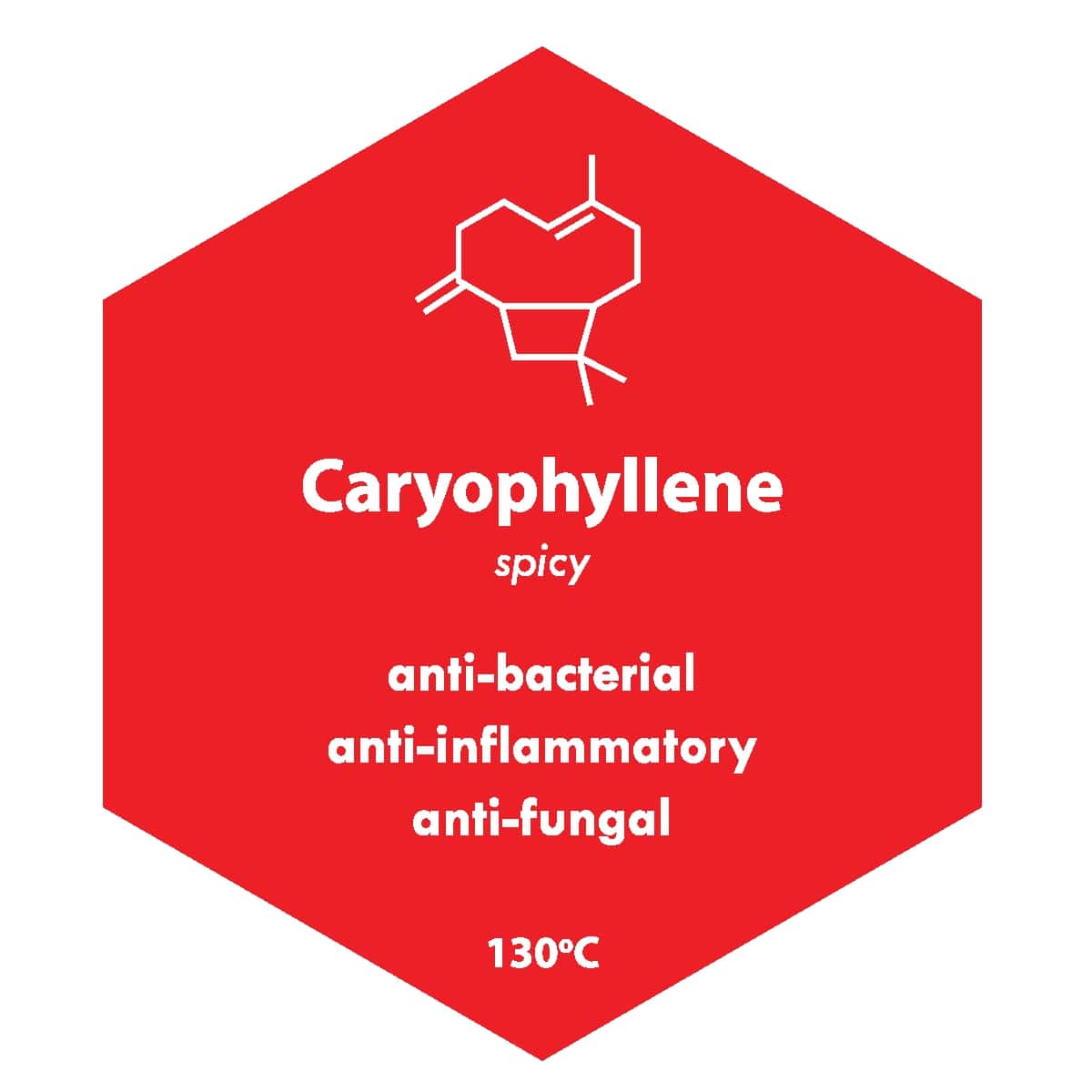
Caryophyllene is a spicy cannabis terpene that fights bacteria, inflammation and fungal infections.
The spicy aroma from the caryophyllene terpene in cannabis is similar to black pepper and cinnamon.
Caryophyllene’s most exciting benefit is its potential to fight neuroinflammation as seen in the Neuropsychopharmacology paper that examined this terpene’s painkilling and anti-inflammatory effects in mice.
The main benefits for Caryophyllene or beta-caryophyllene include:
- analgesic pain relief
- assisting digestion
- anti-inflammatory
Linalool Terpenes
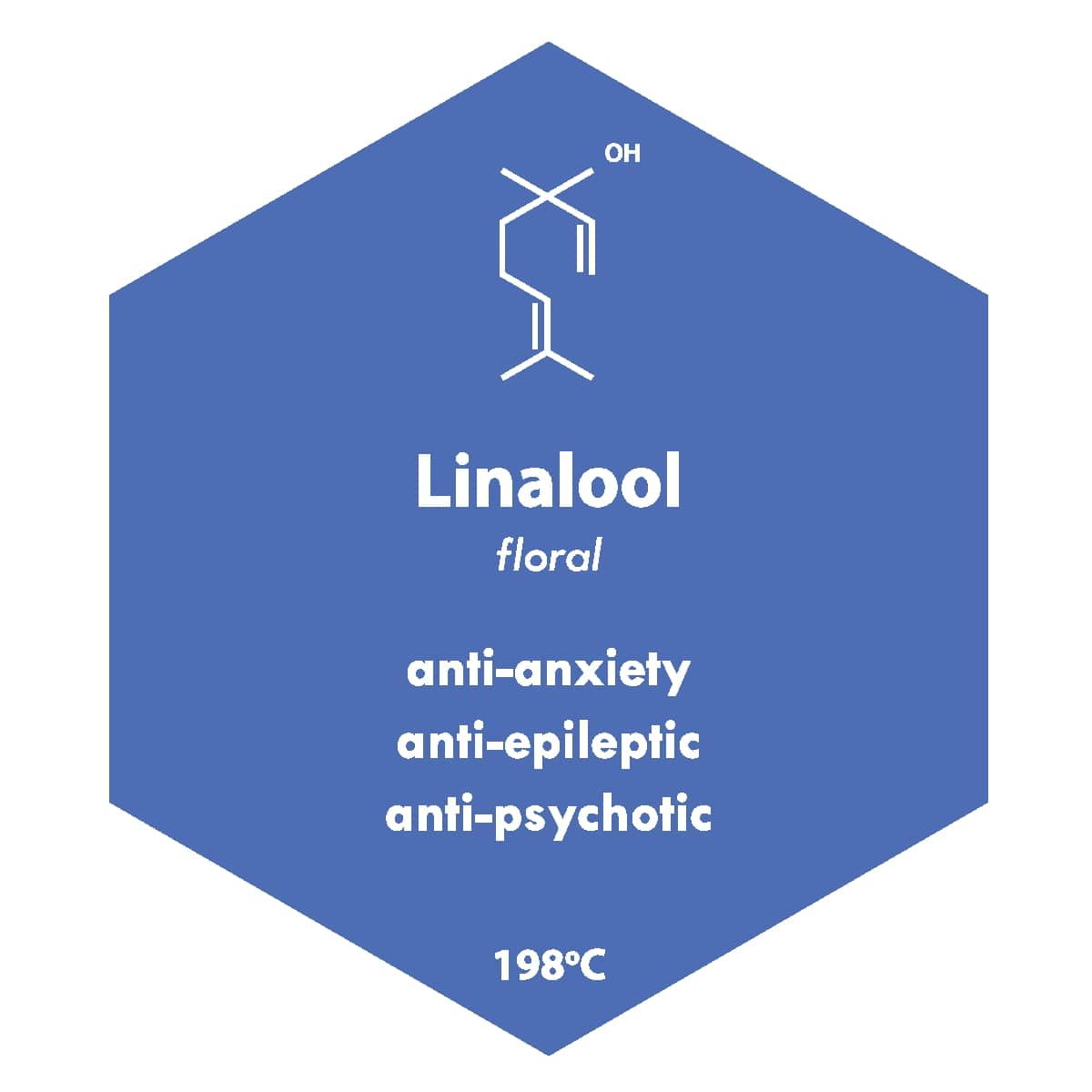
The Australian medical community is studying the exciting anti-epileptic and anti-psychotic effects of Linalool.
Linalool, also termed “The Lavendar of Cannabis”, has massive relaxing and calming effects on its users.
Studies have shown that Linalool in cannabis has shown to reduce both anxiety and depression in patients.
Linalool stands out as a terpene in cannabis that treats psychosis and does not cause psychosis.
The main benefits of Linalool include:
- anti-microbial
- anti-anxiety
- anti-depressant
- anti-psychotic
Terpinolene Terpenes
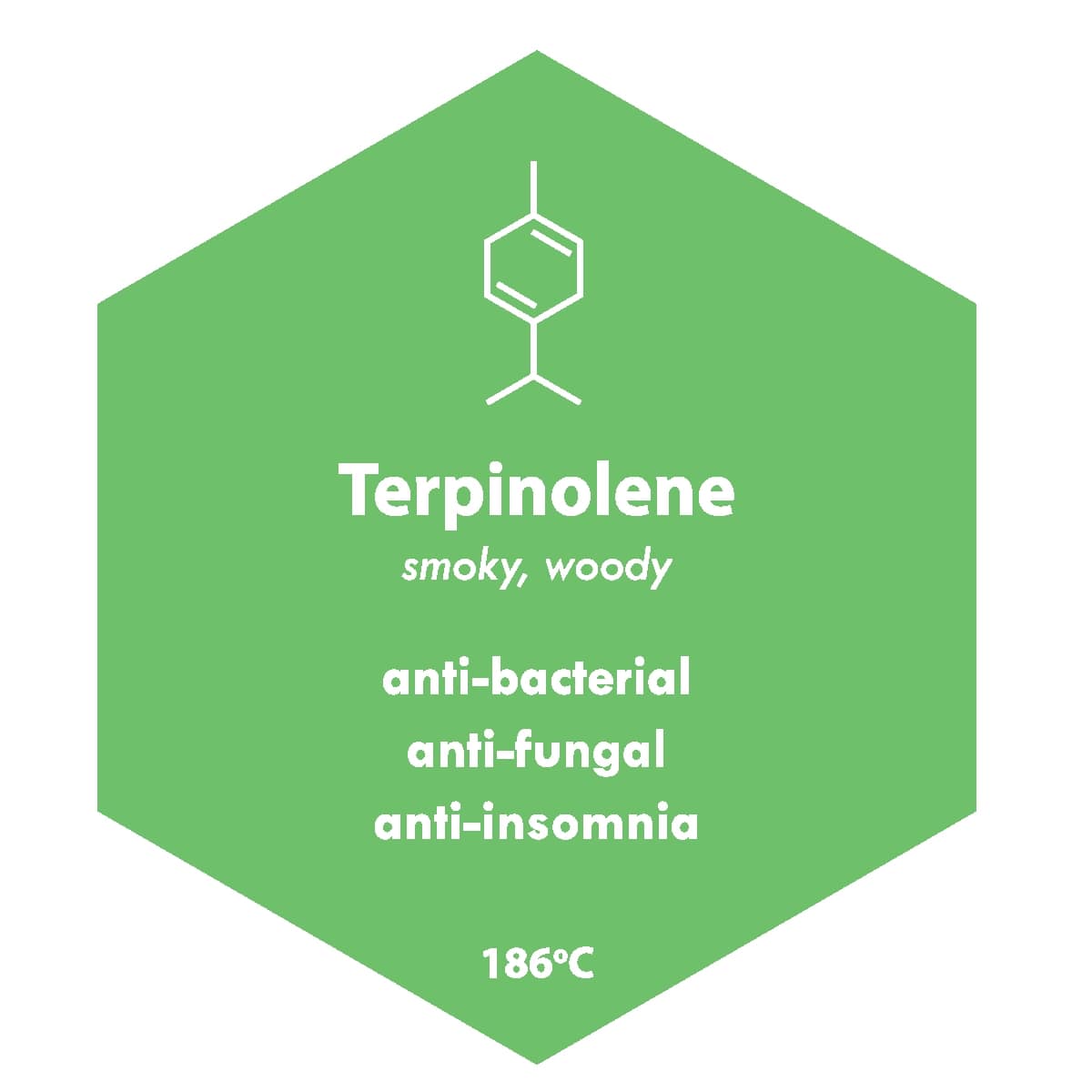
Terpinolene is an aromatic terpene with an intense smoky and woody smell. Its most unique property is its ability to treat insomnia and sleep apnea.
The woody smell found in Terpinolene is also in nutmeg and cumin. A very distinctive smell.
Ongoing research shows that Terpinolene has more medical benefits that just anti-bacterial and anti-fungal properties. Terpinolene has been shown to prevent the growth of cancerous cells and to also reduce the overall risk of heart disease.
The main benefits of terpinolene include:
- anti-bacterial
- anti-fungal
- anti-insomnia
Camphene Terpene
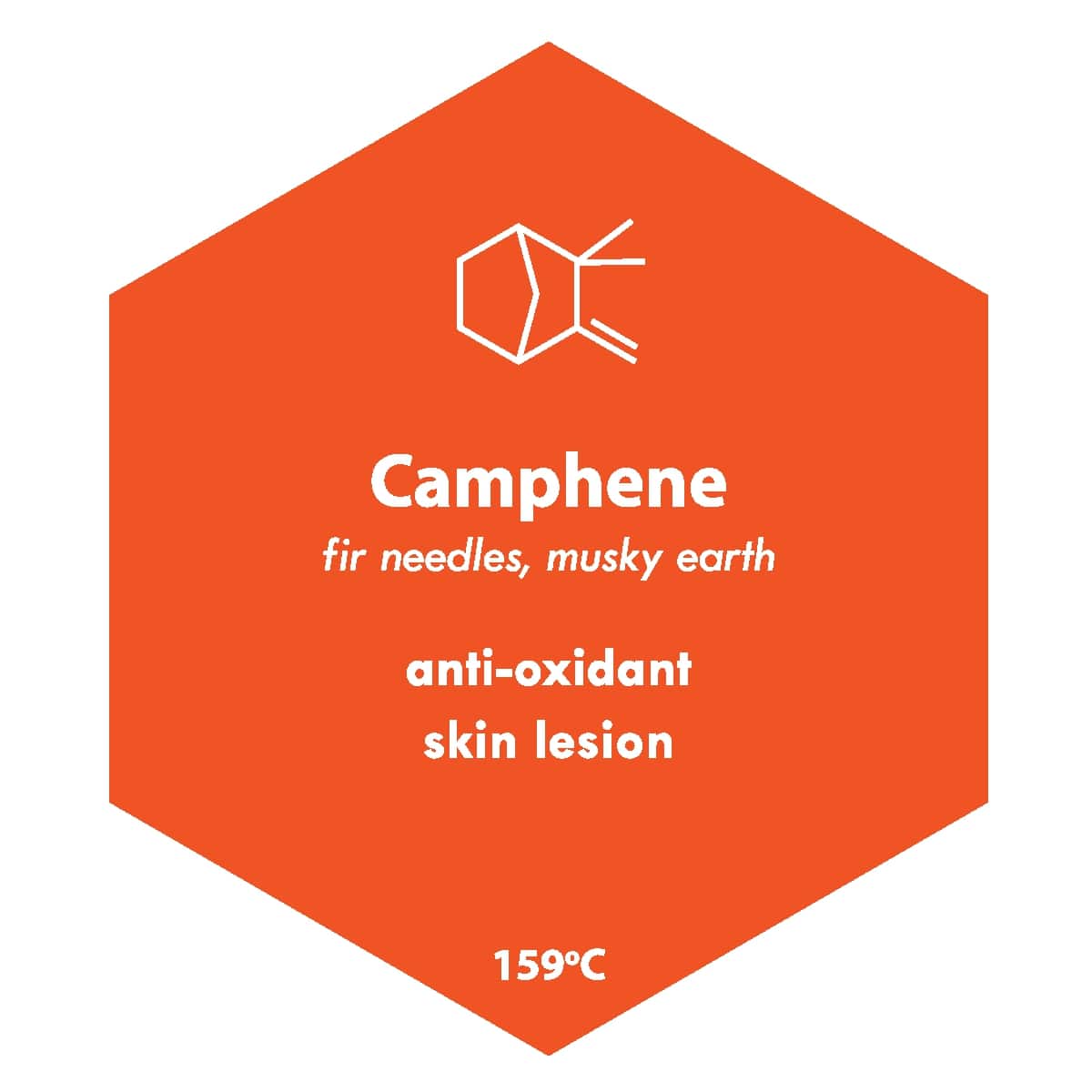
The Camphene terpene stands out from the other cannabis terpenes as it has anti-oxidant properties and the ability to treat skin lesions.
Camphene has a musky, earthy aroma that’s similar to fir needles or pine trees.
The main exciting medical studies around Camphene is with its ability to treat blood conditions and to also lower cholesterol. Camphene also has no side effects throughout all of its medical studies.
Terpineol Terpenes
Terpineol is one of the quieter and less studied cannabis terpenes. The main studies around Terpineol have shown that it has the ability to treat pain, inflammation and also prevent, or reduce the intensity of seizures.
Australian patients are looking for cannabis compounds that prevent seizures are pushing for more research into terpineol as a potent extract that can treat epilepsy.
Phellandrene Terpene
The Phellandrene terpene is a newly studied cannabis terpene that shows exciting medical benefits.
There are a lot of terpenes found in cannabis plants, but only a handful are found inside of the most common cannabis strains.
Studies into rare and uncommon cannabis plants are broadening the scope of what terpenes can be used for medicinal treatment.
The Phellandrene has a delicious minty and citrus aroma that makes it a popular ingredient in foods, drinks and cosmetics.
As recent as 2015, studied on the medicinal benefits of Phellandrene showed it has the ability to treat depression and intense pain.
Carene Terpenes
The Carene Terpene has unique bone healing properties that makes it a unicorn out of all other terpenes.
Studies have shown that the cannabis Carene terpene stimulates the differation of osteoblastic, and promotes bone healing and growth.
The medicinal benefits of Carene are still being studied, but it seems to be a unique cannabis terpene that has surprised a lot of the medical community.
Humulene Terpene
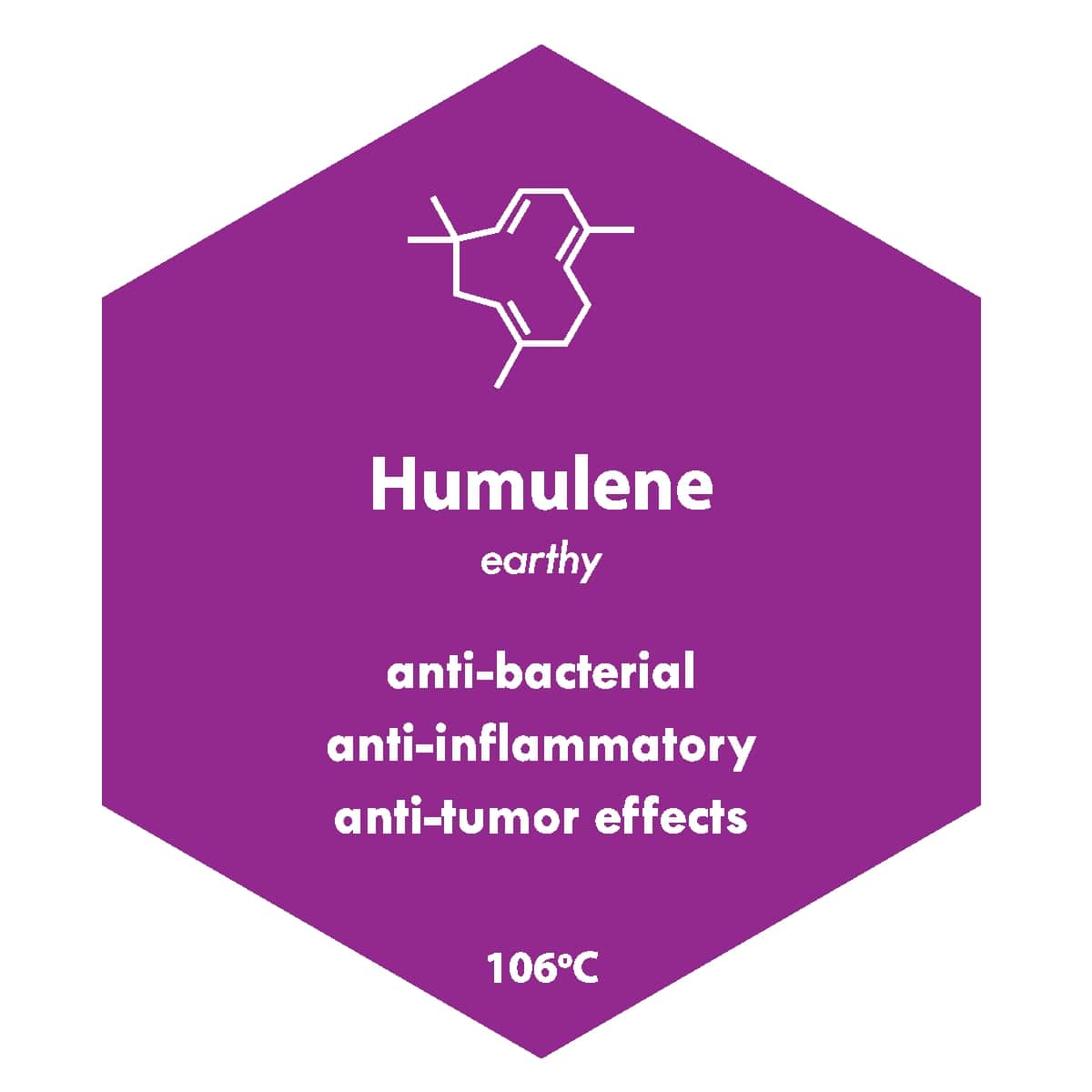
The cannabis Humulene terpene has exciting anti-tumour properties that are encouraging Australia’s research into marijuana as a medical treatment for patients with cancer.
The Humulene terpene is one of the most common terpenes found in marijuana, and it also has some of the most substantial medical benefits.
The main benefits of Humulene include:
Pulegone Terpene
Pulegone cannabis terpene is responsible for the peppermint smell found in edibles and cosmetics.
Compared to most other terpenes, Pulegone has significant anti-anxiety properties that also gives the patient an energy boost.
There has not been a lot of focus on Pulegone. Still, we expect to see more research around its psychostimulant effects that gives patients a unique energy boost without promoting anxiety.
Sabinene Terpene
There hasn’t been too much study around the cannabis Sabinene terpene), but the 2015 Science of Food showed that Sabinene has the following medical benefits:
- anti-oxidant
- anti-bacterial
Geraniol Terpene

The Geraniol terpene has anti-tumour effectors that may have significant medical benefits when treating cancer.
The antitumor effect of Geraniol is spearheading the research of cannabis as a medicinal treatment for cancer patients.
The beta-ionene and Geraniol inhibit cell cycle progression, cyclin-dependent kinase 2 activity in breast cancer cells.
Studies have also shown that Geraniol prevents prostate cancer cell growth.
An exciting cannabis terpene that is leading Australia’s research into cancer treatments.

James King
James is an experienced writer and legal cannabis advocate in Australia. He answers all the questions about business, legalisation and medicinal cannabis.
Disclaimer: Cannabis Place are not doctors and we recommend consulting health professionals for accurate information. This site may contain information regarding drugs. This medicinal cannabis content is designed for an 18+ audience. Click here for our full disclaimer
